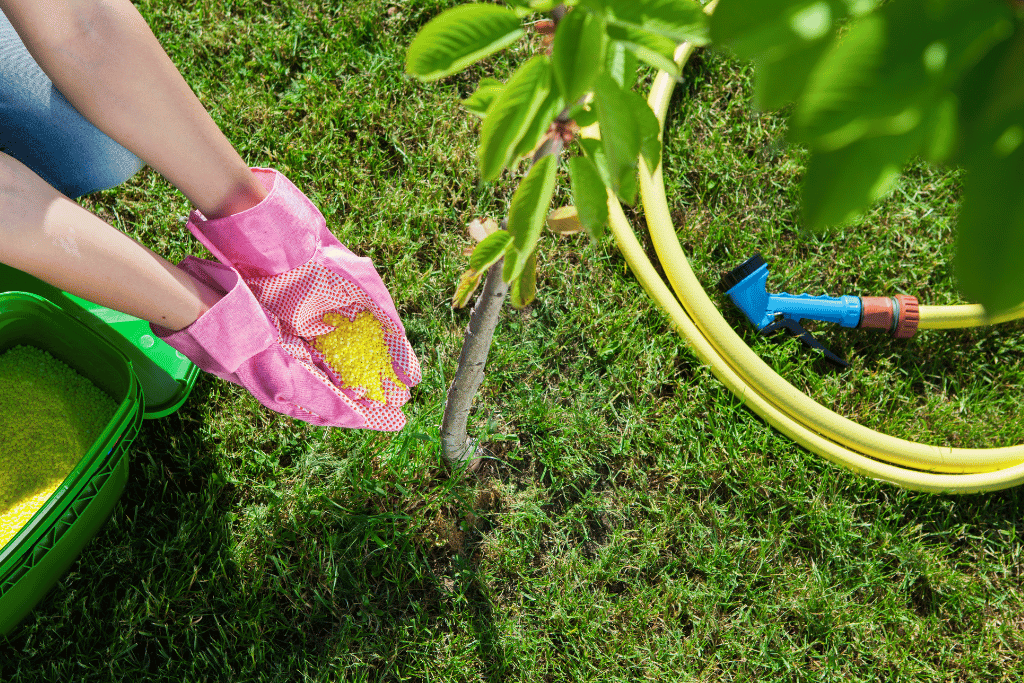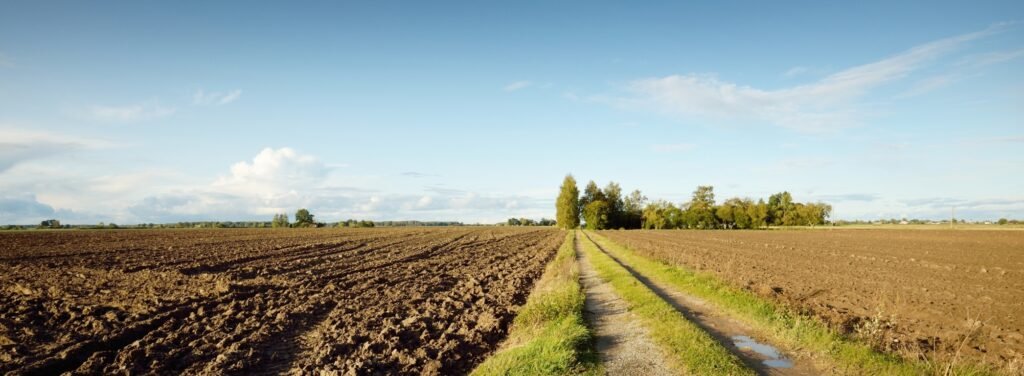
Back in the day, I spent an entire season working on a relatively large farm that produced, vegetables, herbs, fruit and flowers.
The operation included a few greenhouses for starting seeds and keeping warm weather plants and four or five substantial planting fields for cultivating various crops.
The farmer took pride in the scale of the farm, the amount of fresh produce it produced every season and the long hours he worked.
Deservedly so.
He would rotate crop types in each of his fields every year, which is a good practice. And to prepare the fields for planting, he employed the conventional practice of traditional tillage.
It began with a primary till which used a plow to upturn the soil. The secondary till harrowed the field with small disks, breaking up mounds and big clumps of soil. Then, the field was smoothed over to prepare for transplants and direct seeding.
He was familiar and comfortable with that process and, for the most part, it yielded good results every season.
Yet, the soil quality was left lacking nutrients and good drainage. For this, he had to supplement the fields every year with industrial fertilizer and pray for a season with limited precipitation.
The knowledge and practices the farmer implemented worked just fine for him, but he wasn’t doing many favors for the soil in the long run.
This quick snapshot demonstrates the basic methodology and practice of traditional tillage.
There are countless ways to prepare fields for cultivation. Among these are two major schools of thought: Traditional tillage and conservation tillage.
Now, we can further explore the process of traditional tillage. Understanding it on a deeper level will help us compare and contrast this method to its counterpart, conservation tillage.
Traditional Tillage Features
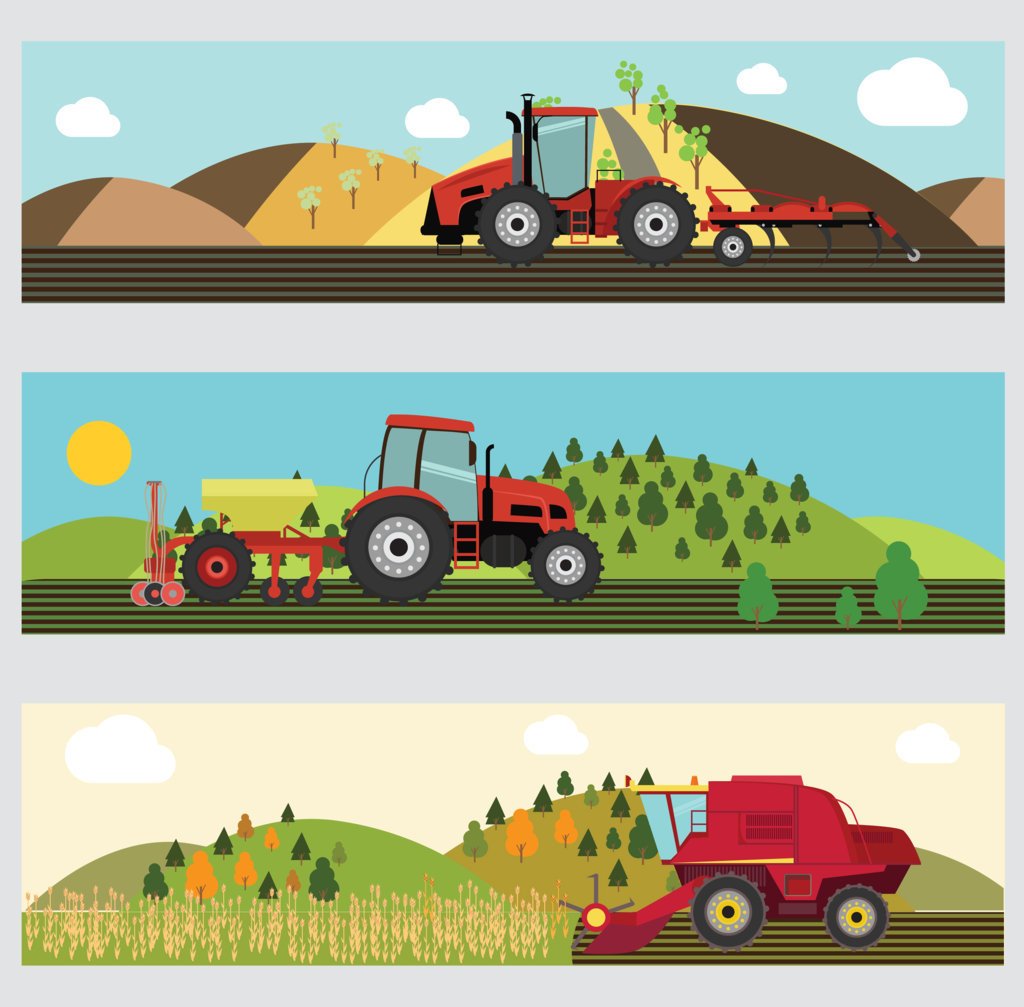
Traditional tillage bears its name because the technique has been practiced for hundreds of years since the invention of the plow. It is often referred to as conventional tillage, which is another good descriptor for this mode of cultivating the soil.
It has received the moniker “conventional” because this type of tillage has overwhelmingly become the standard since the agricultural industry began to cultivate on larger scales.
However, just because something has always been done a certain way, doesn’t mean it needs to persist. Yet while traditional tillage isn’t perfect, it does have many advantages.
Let’s break down the exact process of traditional tillage, and then we’ll move on to the pros and cons of this conventional practice.
Primary Tillage
Primary tillage is also referred to as plowing. Plow attachments on tractors dig, loosen, turn over and expose deep levels of soil. It is typically performed after the harvest or at the start of the following season.
Primary tillage achieves a few things:
- Cultivates a desired depth of soft soil.
- Increases the aeration and water reception of deep layers of soil.
- Chops up, buries and exposes the roots of weeds.
The mold-board plow is the most common tool for initial tilling. It’s very effective in breaking up hardpan layers of earth and just as helpful in plowing fine, sandy soils.
Disc plows are more commonly used for rocky soil, as they are more agile in dealing with obstacles.
Secondary Tillage
After the soil is turned for the first time, secondary tilling is employed to fine-tune the soil. The soil is cultivated further, giving it the perfect structure for seedbeds.
The process of secondary tillage accomplishes necessary steps:
- Breaks down mounds and dirt clods left behind from the primary tillage.
- Incorporates fertilizers into the soil.
- Destroys leftover weeds and suppresses their growth.
Small disk harrows are attached to the tractor and multiple passes are made over the field to smooth the terrain. Then, a spring tooth harrow, or a “drag,” is used to break down the soil further.
After the secondary tillage, depending on your region, it may be necessary to hand-pick out large rocks. I’m fortunate enough to be a farmer in Western New England where the soil has, shall we say, a lot of texture.
At the aforementioned farm, I remember spending a whole day clearing out heavy stones from one of the rockier beds early in the season. Not the ideal way to pass 9-10 hours, but it was one heck of a workout and left us with a great sense of accomplishment.
Leveling
Smoothing out the soil surface will be the final step of the process. The soil must be leveled and firmed up to prepare for seeds and transplants. A roller or cultipacker, an attachment that builds a sturdy seed bed, levels, flattens and smooths out the field. Then, it’s finally ready for planting.
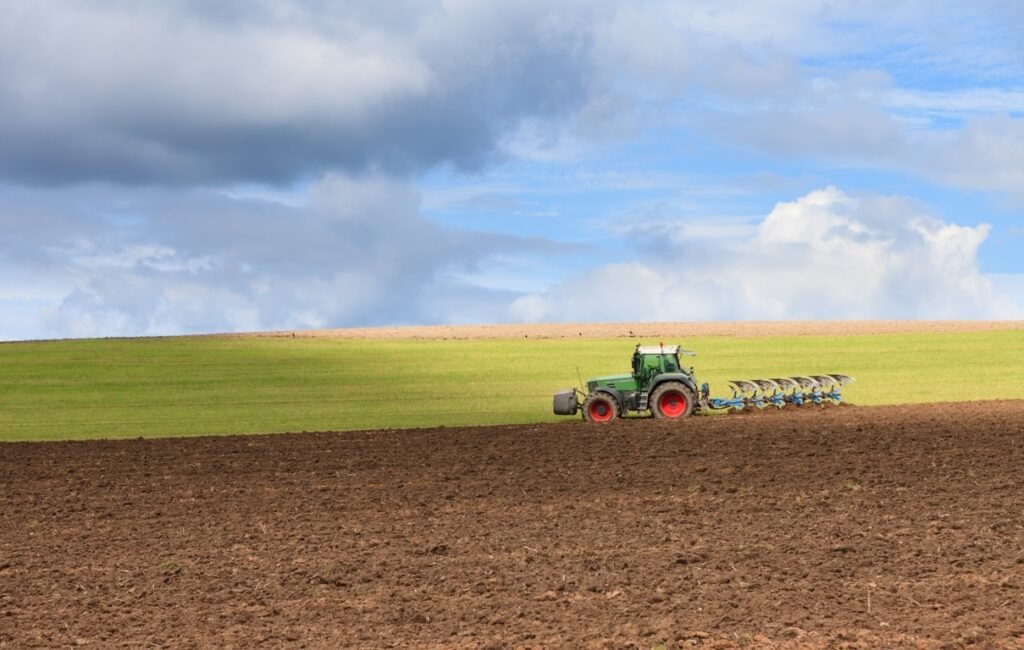
Traditional Tillage Advantages
Traditional tillage offers a few distinct benefits when compared to other forms of tilling.
- Conventional tillage aerates the soil.
- Multiple passes with plow and harrow destroy all weeds and prevent them from returning.
- The secondary tillage phase helps thoroughly incorporate fertilizer into the soil.
- Pest lifecycles and shelters are disrupted, exposing them to predators and unsuitable conditions.
- Traditional tillage is appropriate for poorly drained soils and produces well-tilled seed beds.
Traditional Tillage Disadvantages
For all its conveniences, traditional tillage has many shortcomings, most of which are addressed with different tilling methods.
- Conventional tillage destroys the surface structure of the soil cover.
- It contributes to land and soil erosion.
- The ability to retain water is minimized due to the consistent turning of the soil.
- Traditional tillage doesn’t incorporate plant residues or other organic matter; rather it removes these beneficial substances.
- It ruins the delicate balance of the soil’s ecology, disrupting the lifecycle of beneficial insects and microbes.
- Traditional tillage expends the most fuel, energy and resources.
- It is the most expensive method of tilling to maintain.
Conservation Tillage Features
The ultimate goal of conservation tillage is to prevent soil loss by leaving a portion of the previous year’s crops in the field to decompose. The crop residue should make up at least 30% of the planting area’s total surface.
The leftover material eventually breaks down, feeding the soil and covering the surface. Water runoff is substantially reduced, which preserves resources and minimizes pollution.
The four most widely practiced metconservation tillage methodse as follows:
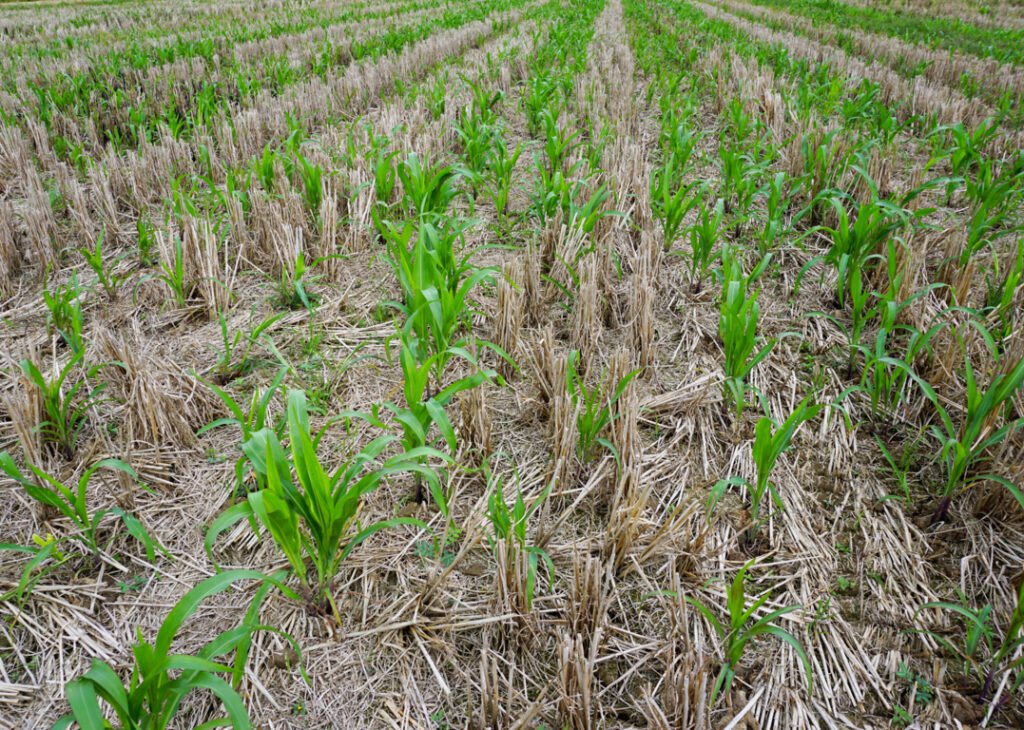
1. No-Till
The no-till method is the least disruptive form of conservation tillage. Seeding and fertilizing are done in a single pass. Seedbeds are specifically dug shallow to preserve the soil’s integrity.
Crop residue is used to cover and effectively plant the seeds. This will keep the seeds in place and feed them over time as they sprout and grow. High-quality fertilizer is applied to further feed the crops and establish productive topsoil.
No-till is also known as zero-till, direct seeding and slot planting.
2. Strip-Tillage
The strip-tillage technique divides fields into two halves. One side is seeded with a cash crop and the other is reserved for soil conditioning. Only the soil on the first side is tilled to prepare for easy crop planting. The other half is not tilled but sown with a cover crop.
Throughout the season, the cover crop achieves the same results as tilling. On top of loosening the soil, cover crops produce biomass and fix nutrients into the soil.
3. Mulch-Till
Mulch-tilling involves completely working the soil before planting. Special tools such as cultivators and chisels are then used to partially mix organic mulch into the field. The soil is only minimally disturbed, while moisture retention and organic material content are vastly improved.
4. Ridge-Till
The ridge-till method forms and maintains permanent raised beds. Special machinery is required to form these ridges. Plant residue is applied to the ridges in the off-season. This supports the structure of the bed and helps improve its fertility. Before planting in the beds, the residue is removed and left between the ridges to help control weeds. Bed maintenance and weed management are controlled by cultivation.
Basic Principles of Conservation Tillage
To further clarify the objective of conservation tillage, I must mention the NRCS (Natural Resources Conservation Service) of the USDA (United States Department of Agriculture.) The NRCS lays out four basic principles to assist farmers in managing, protecting, and feeding their soil.
- Keep the soil covered (protect)
- Reduce soil disturbance (protect)
- Keep living roots in the soil (feed)
- Diversify using rotations and cover crops (feed)
These pillars of conservation tillage can be implemented to drastically improve soil health, reduce erosion and minimize loss of nutrients.
Conservation Tillage Advantages
Conservation tillage affects agricultural systems on every level. Sustainable practices that provide soil coverage, increase surface residues, include crop rotation, reduce the need for inputs and improve soil quality shouldn’t be overlooked.
Environmental Responsibility
The environment as a whole benefits from conservation tillage. What is taken from the earth is reintroduced back into the soil, keeping the cycle unbroken. The farmers that adhere to this philosophy decrease the demand and prevalence of chemical herbicides and fertilizers.
Native plants and pollinators flourish when these poisons aren’t eradicating them.
Resources are preserved due to the ability of the crop residue to retain water and prevent runoff.
Because of the minimal amount of tilling, less energy is consumed, while the need for fertilizer is greatly reduced.
All of these factors contribute to cleaner air, soil and waterways.
Conventional agricultural practices tend to be more intense.
Excessive tilling increases the demand for fuel and fertilizer. The depleted soil has no means of retaining water due to its lack of fresh organic matter. This results in large amounts of runoff that carries pesticides and chemical fertilizers into neighboring waterways.
Conservation tillage is the obvious choice for the eco-friendly farmer.
Farm Prosperity
The practice of conservation tillage makes a farm more resilient to extreme climate conditions. The incorporation of organic matter and plant residues captures and retains moisture, slowing down the rate of evaporation. This protects crops from drying out during times of drought.
Less capital is spent on fertilizers, pesticides, water and fuel because farmers use what they produce themselves to feed and sustain their crops. These savings can add up to a small fortune by the end of a season.
By adding fresh organic matter, the life force in the soil ecology is outstanding. The presence of beneficial microbes, enzymes and minerals helps to produce substantial yields that net higher profits.
Conservation tillage may require a bit more work but certainly costs less and yields more.
A win-win situation for any farmer.
Agricultural Sustainability
We can safely state that society at large benefits from agricultural sustainability, stemming from practices like conservation tillage.
Simply put, an efficient farm consumes less while producing more. The study and implementation of conservation tillage on every level could permanently fix the problems of the agricultural industrial complex.
In order to be evenhanded, let’s touch on some of the drawbacks of conservation tillage.
Conservation Tillage Disadvantages
Some disadvantages associated with conservation tillage are inherent in the practice, while others are avoidable through proper implementation.
- Soil compaction is a problem when equipment isn’t used appropriately or if crop rotation doesn’t follow the correct succession.
- Conservation tillage demands a good deal of intense labor, especially in the beginning stages. Specialty equipment is required on a large scale and a lot of time-consuming physical labor is needed on a small scale.
- Extra time and labor lead to higher start-up costs. Without initial investment capital, the expense of starting a conservation tillage practice can deter many farmers from beginning in the first place.
- There is no immediate payoff when using conservation tillage practices. Almost all of the benefits are realized in the long term. Over time, soil condition vastly improves. However, observing these positive gains will take at least a few seasons.
- Incorporating fertilizer and organic material into the soil can be challenging due to the low till nature of the practice.
- Certain greenhouse gases, other than carbon, may be produced inadvertently by increased moisture retention and microbial activity.
- Some farms that practice conservation tillage employ herbicides to control weeds. It’s an unfortunate byproduct of choosing not to till.
Conservation vs. Traditional: The Bottom Line
Old-fashioned traditional tillage, despite its faults, has earned a reputation for getting positive results over the centuries. It certainly is a valuable method for breaking hard ground and establishing new planting fields.
But, when traditional tillage is practiced year after year, without variation or addition of organic matter, the soil can become depleted rather quickly. Trouble from erosion, nutrient deficiency and the cost of fertilizer and fuel, along with their effects on the environment, are the reasons modern farmers seem to be progressing toward the methods of conservation tillage.
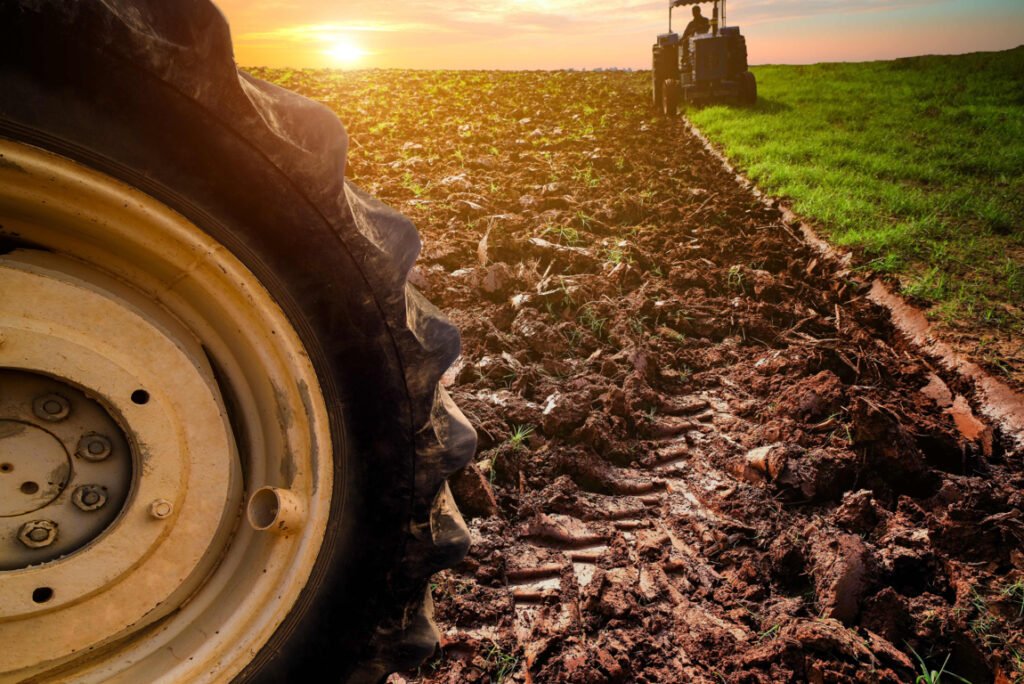
The practices that fall under conservation tillage aren’t perfect either but aim to improve soil quality and put less stress on the environment.
By incorporating plant residues and tilling minimally, soil structure is left intact. This leads to less erosion, better moisture retention, well-fed soil and much lower demand for inputs, sparing the soil and environment.
These conservation tillage practices will be sustainable for a long time into the future.



